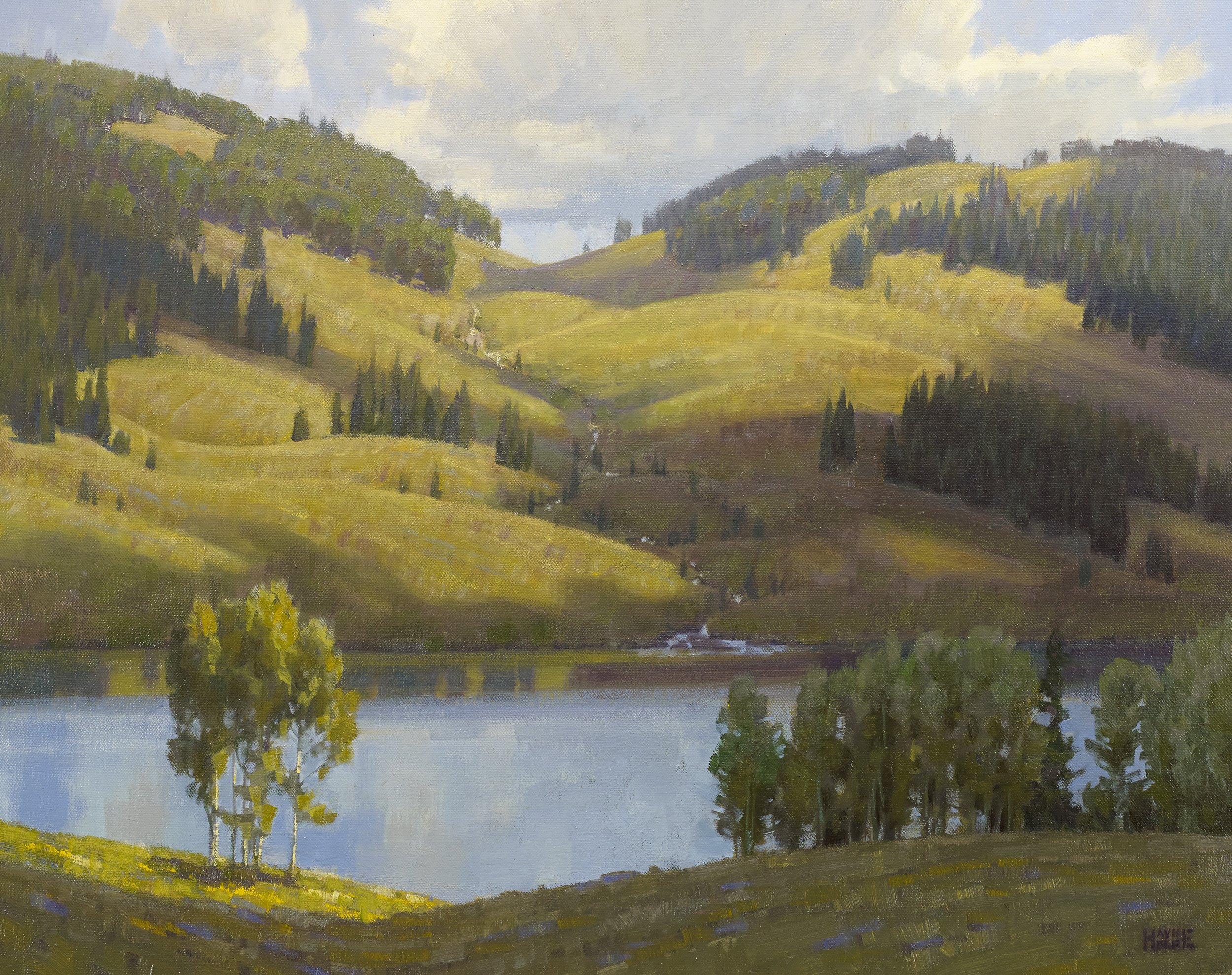Wayne Wolfe was introduced to the world of art by his father, Byron Wolfe, who worked initially as a commercial artist and then later for himself as a fine arts painter of western history. His father was an early member of the Cowboy Artists of America.
Six months after his father’s death in 1973, Wolfe began painting part time, while still working as an advertising account executive and copywriter. On April 1, 1975, he left the business world, fulfilling a need for independence and his desire to pursue painting for himself.
Wolfe is a graduate of the University of Kansas, but as a self-taught artist, he recognized his own limitations and the need for study. He corresponded for two years with the late Robert Lougheed, who encouraged Wolfe to move to Santa Fe. In 1976, Wolfe rented the Lougheed guest house for three years, studying and painting with him virtually every week during that time; then for another three years after Wolfe built his own home and studio. While in Santa Fe, Wolfe also studied with two -time Prix de West winner, Tom Lovell. He credits Lovell with helping him in the study of the head and figure, learning about line, mass, and anatomy in a new and refined way.
It was Lougheed who insisted Wolfe paint from life in order to see the truth in nature and learn her vocabulary. Wolfe speaks of that time affectionately. “Bob believed when you worked from life, you always had the best information right in front of you, and that your brain and eye had the best opportunity to work efficiently.” Wolfe’s oil painting, Antlers in the Aspen, based on an outdoor oil study, won the Prix de West Award in 1982, and he credits Lougheed’s criticism as vital to its success.
In a profile in American Artist, Wolfe said, “When you’re on the spot, you’re seeing the best values, the cleanest color, and real edges. You’re also seeing objects in a wonderful light, and you’re much more apt to paint a clean, unmuddied picture.”
Wolfe has exhibited widely, including the National Museum of Wildlife Art, the Museum of New Mexico, Cincinnati Museum Center, Rockwell Museum, and Gilcrease Museum, which honored him with a retrospective exhibition.
Today Wayne Wolfe reflects on the natural world he chased throughout the Rocky Mountain region into Canada to the eastern seaboard and through the deserts of New Mexico and Arizona. While his eyesight has given way, leaving him unable to capture the scenes that were such a part of his life, he holds dear his many friendships and times well spent in Santa Fe, Loveland and Montrose where he remains close with many of his artist peers.
We recommend using a computer for the best viewing experience. Click and hover over an image for details.When using a mobile device, we recommend turning the device sideways for the best view and tapping the small dot for image details.















